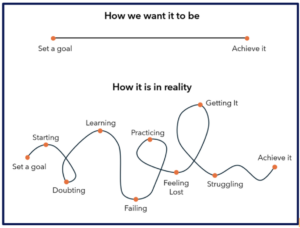Lessons from 4-year demonstration project now detailed
By Laura Pinsoneault, PhD
A broad array of community partners working together keeps kids safe. As child advocacy specialists strive to develop innovative ways to protect children from abuse and neglect, the Child Safety Forward (CSF) initiative demonstrates that strong partnerships between child protection agencies, communities, neighbors and families can keep kids safe. With the release of the final evaluation report of a four-year demonstration initiative at five sites across the US, we now have a strong set of strategies that are adaptable to the specific challenges communities face. The national demonstration initiative is called Child Safety Forward (CSF), which the Department of Justice’s Office for Victims of Crime launched in 2019.
This initiative engaged five local, county and statewide sites across the US in Illinois, Indiana, Michigan, Connecticut and California that included research, planning and implementation around strategies aimed at reducing child injury and fatality from abuse and neglect.
The strategies resulted from community collaboration that strengthened cross-sector communication, stronger practice and policy, and supports, and included helping parents address stress, adversity and trauma. Emphasizing such protective factors is the heart of a public health approach to promoting child safety, engaging the voices of parents and others not normally included in finding the most effective solutions to child abuse. The initiative approached this challenge of child abuse prevention by changing the system that governs how we approach it. In doing so, each demonstration site focused on strategies designed to address its community’s particular challenges.
At Evaluation Plus, our role was to support evaluation efforts at each site, as well as to identify which strategies could be adapted and applied elsewhere. The approach we used was developmental evaluation, which is designed to address complex problems through systems change. This leads to innovation by using near real-time inquiry and data when working on planning and implementation. This approach is not about improving what we already know but rather learning about and developing different ways of designing strategies and how we think about change.
What we learned is that focusing on prevention and protective factors offers more options and more opportunities to work collaboratively. If we want to make faster progress toward our goals, it’s also imperative to ask the right questions, at the right time with the right data in hand. By continually learning in these ways, we can spend more resources geared toward adapting our strategy. We also learned how critical it is to examine the role of power when considering who is working on these problems. To achieve viable and sustainable solutions, we need to work harder at bringing in parents and others not typically included in these discussions.
Broader lessons from the sites
The report identified four key lessons from these demonstration projects that may well be applicable everywhere:
- Communications. Unifying messaging built on collaborative partnerships results in a better-informed public and helps shift the thinking about how to best prevent child abuse.
- Better data. Data to identify child fatalities and understand their causes is lacking across the country, and we need a renewed focus on shared accountability for collecting good data and using it in decision-making.
- Developmental Evaluation. This approach leads to innovative ideas to address complexities as they arise by building on existing knowledge and using it to shape more effective solutions.
- Equity, Power Shifting and Parent Engagement. We must eliminate adversarial relationships between systems and parents to achieve a united commitment to keep kids safe.
This report offers an exciting roadmap for how to better address conditions that threaten our children. Our communities can do better, as this demonstration project shows, when we devote ourselves to working more collaboratively in addressing the unique needs of each community.
To see the specifics of what was accomplished in the five final evaluation briefs and adapt the strategies to your community, please visit social-current.org.






